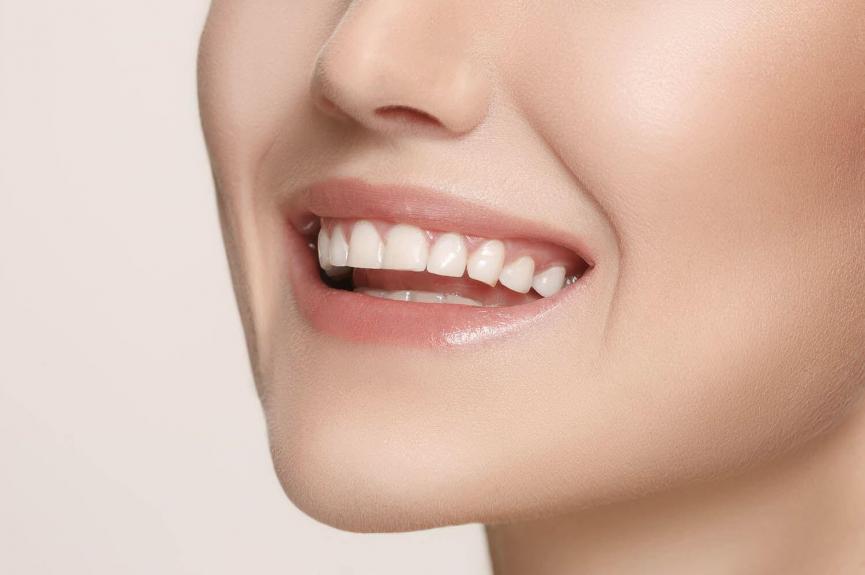
Price/Cost table
| Type | Price/Cost USD |
| Direct bonding | $100 - $500 per tooth |
| Bonding to fix gaps between teeth | $200 - $400 |
| Dental bonding for enamel loss | $300 - $600 |
Bonding teeth is a dental procedure that effectively corrects different aesthetic problems. The results are visible immediately, most often within one visit to the dental office. If you are still wondering if dental bonding is exactly the treatment you need, let us help you answer your question!
What is dental bonding?
Dental bonding 1, also known as composite or tooth bonding is a conservative, efficient, and affordable procedure that can help you get a beautiful smile. This is one of the easiest and non-invasive methods for correcting various imperfections on the tooth surface such as staining, breakage, misaligned teeth as well as too large gaps.
The procedure uses a bonding material to place a filling. It is generally a white filling that is made out of composite resin and looks like just your natural teeth. This material is light-activated and bonded to the surface of the existing tooth. Bonding materials come in a wide variety of shades to match your teeth colour. A single tooth can be shaped and coloured or your entire smile can be changed.
Tooth bonding is quick, affordable, and almost without pain. The procedure is a cheaper alternative to the more expensive cosmetic dentistry treatments with crowns, veneers, and so on. It can be performed in two primary ways - direct composite bonding that repairs chips or cracks and adhesive bonding that is used with crowns, veneers, and dental bridges.
Cosmetic dental bonding is suitable for pretty much every patient. Any little imperfections that affect your smile can be improved with such a procedure.
Why get teeth bonding?
Bonding is a suitable procedure in the following cases:
- for staining teeth that are not subject to bleaching;
- for chipped teeth or cut edges and broken parts of the tooth;
- for defects due to injuries,
- for tooth gaps;
- for filling a cavity;
- in case of loss of dental tissues from excessive use of carbonated beverages;
- for correction of the shape and position of the teeth in areas with low bite pressure for a natural-looking smile.
Of course, each case is unique and requires an individual approach. Your dentist should consider a number of other factors and advise you on how to improve the aesthetics of your smile. Together you will choose the most suitable option for you to achieve the desired results.
Teeth bonding process in Singapore

- The dentist will use a shade guide to select the perfect colour for your teeth.
- Your dentist then will roughness and edge the tooth. This process is painless and does not require anaesthesia.
- Then a conditional liquid is applied to help the bonding resin to stick on the tooth.
- Then the raisin is applied to the tooth and moulded to the perfect shape.
- Using an ultraviolet light the bonded raisin is now hardened.
- Some further shaping is performed to ensure the best possible look.
How much does dental bonding cost in Singapore?

Some direct bonding can range anywhere from $100 to $500 a tooth depending on what is needed - how many teeth will be bonding, the size of the area, and the complexity of the problem.
Dental bonding to close gaps might be somewhere around $200 and $400. Dental bonding for enamel loss may cost you $300 - $600. The chipped tooth bonding cost is similar.
Is dental bonding permanent?
Dental bonding cannot be readily removed however it is not meant to last for a lifetime. But how long does dental bonding last? You can expect to last for approximately 5 to 6 years 2 before it needs to be polished up or repaired again. Sometimes it may last longer and sometimes it may need to be replaced sooner than 5 years. The material may chip, discolour, or no longer match your natural teeth as they change colour over time. In most cases, bonding can be redone when it becomes necessary to replace your bonding.
When bonding is done on very strongly resin material, this will last for many years.
Benefits of teeth bonding
- Teeth bonding is a particularly great procedure because it doesn't require removing any tooth structure to bond, it is added directly onto the tooth.
- There is no pain during the procedure. No anaesthetic or drilling is required.
- It is a less expensive alternative to veneers with a very similar aesthetic result
- In most cases, the procedure does not involve grinding the teeth.
- The procedure can be performed in one visit.
- A huge advantage of the modern resin material 3 is their improved strength, the ability to polish to shine, which stabilizes the colour for a quite long time.
- Natural colours, with a light refractive index close to natural tooth tissues, is also a huge plus.
Are there any disadvantages?
Dental bonding can be used in areas where you see small chips and the teeth are small root canal discolourations. Often times when you have larger chips or larger discolourations or there is a big space between the teeth you may need to look at a different option. The reason is leftover time dental bonding starts to attract stain and it starts to break down. In cases with front teeth where you have spacing or larger areas that need fixing, your dentist will recommend doing something for full coverage as an option such as a dental crown or a veneer.
Do bonded teeth require special care?
Basically, you need to treat them like your other teeth:
- you need to brush them twice a day;
- you should floss your teeth every night;
- it is good to avoid eating hard food as well as drinking too much coffee, tea, and red wine;
- it is recommended to visit your dentist regularly for check-ups and professional cleaning.
You need to keep in mind that bonding is not a natural tooth structure so even it is durable 4, functional, and aesthetic it is not as strong. If you have good oral hygiene and care for your bonded teeth, clean them and check them regularly that filling could last even 7 or 10 years. However, it is not unusual for a filling like that to be replaced especially if it is covering a large portion of the tooth.
Dental bonding vs. veneers
Depending on what on your smile goals are, dental bonding and porcelain veneers both work in different ways to correct certain dental conditions.
Dental bonding for instance is:
- tooth colour compound resin material;
- it is light-activated;
- it is bonded to the surface of the existing tooth;
Teeth bonding is most commonly used to cover minor imperfections like small chips or discolourations and the entire process only requires one visit to the dentist's office.
Let's compare bonding to veneers:
- Porcelain veneers use a stronger, more durable material.
- They can help you to achieve more radical smile transformations than bonding.
- Veneers are ideal for more complex cases where an entire smile makeover is required.
- The placement of veneers requires more time, expertise, and resources in order to fabricate and bond to the tooth and therefore is more costly than bonding.
Porcelain veneers offer a more permanent solution to cosmetic dental problems, unlike dental bonding. Dental bonding can stain over time a chip and may need to be replaced more often. However, a dental bonded tooth can be easily repaired or simply removed if need be. Porcelain veneers can't be repaired if they break or chip and must be entirely replaced. Because porcelain veneers are made of more durable thin material they look more lifelike than dental bonding and they don't stain.
Bonding vs. crown: front tooth restoration
One of the most common aesthetic dental problems is cosmetic defects on the front teeth. These are usually abrasions, congenital imperfections in the shape, size, or colour of the teeth, breakage due to trauma, or improperly restored teeth with fillings. Front teeth can be restored with veneers, crowns, implants, dental bonding, or a combination thereof.
A dental crown is a tooth-shaped cap that is placed over the entire tooth to restore its shape, strength, and improve your smile. Crowns and bonding can both make your smile beautiful. However, the differences between these two procedures are vast.
Here are some of the main differences between bonding and crowning:
- The material of construction. Crowns are made of materials such as porcelain, metal, zirconia, etc., while dental bonding uses composite resin material.
- Duration of the method. Placing crowns require at least two visits to the dentist's office. Dental bonding can be done with one visit.
- Strength. Crowns may last up to 10 years while dental bonding restoration should be repeated in 5 to 6 years.
- Invasiveness of the method. Placing crowns require local anaesthesia and a dental bonding procedure is usually done without any anaesthesia.
- Cost. Crowns are significantly more expensive than bonding for teeth.
There some main things that you should really think about when you are investing in cosmetic dentistry. The first thing is to make sure you are doing the right procedure for you and not doing something that you don't need. Also, you may want to think about if you are looking for the cheapest dentist or the cheapest place you can get dental procedures because there can be some problems with that. And then lastly, think about the experience of the dentist you ultimately choose because that dentist is going to be placing something in a very valuable spot on your face - your smile. So definitely you should be careful with your choice.







